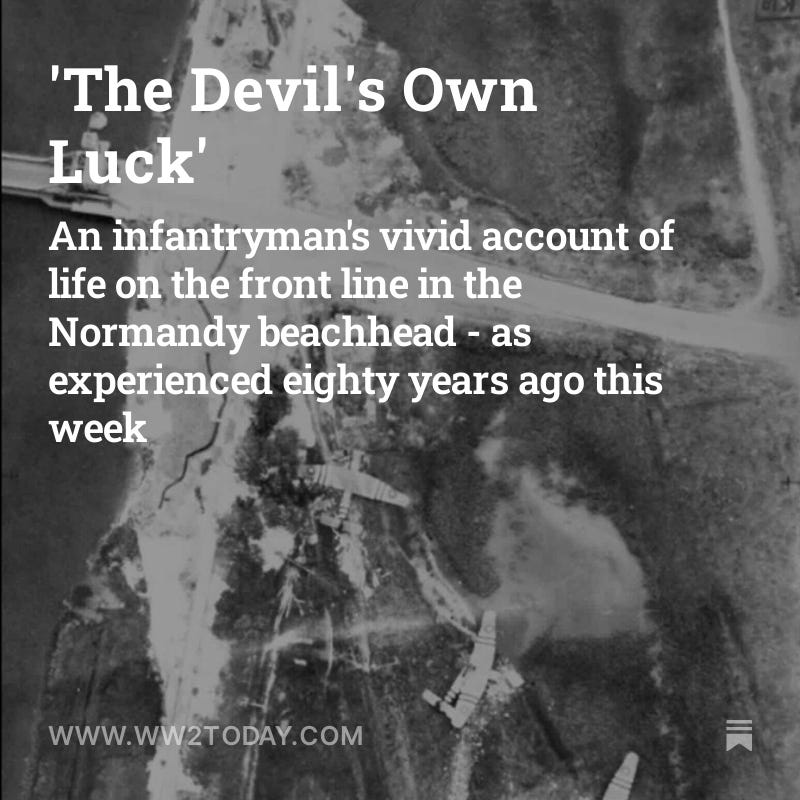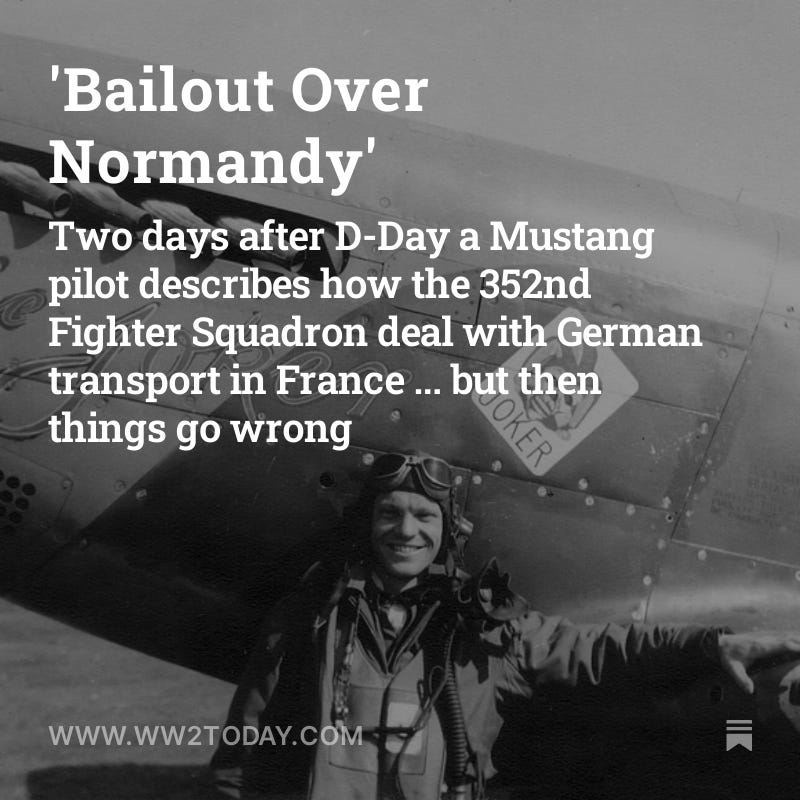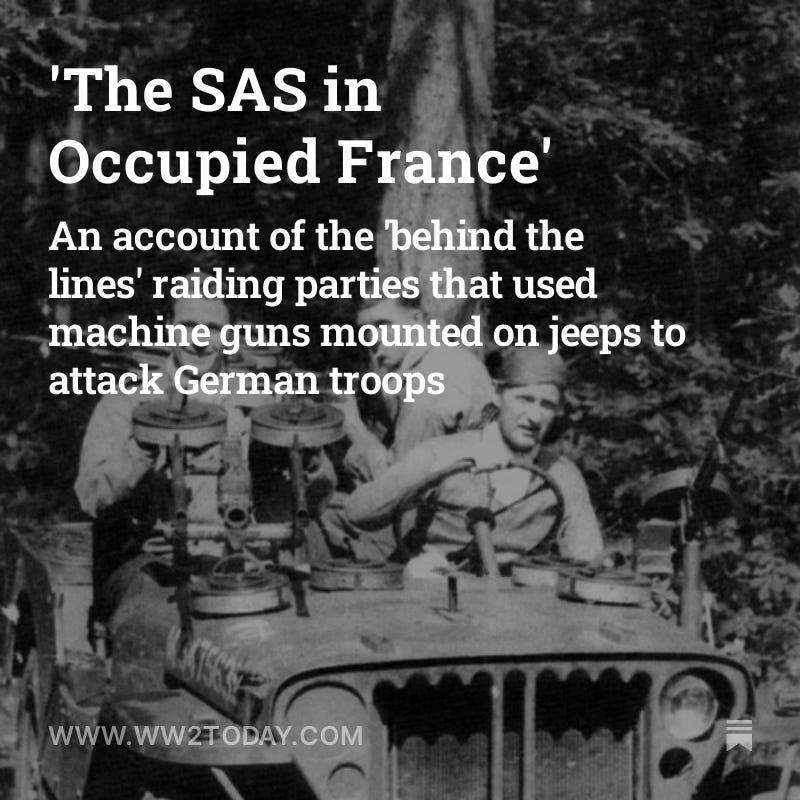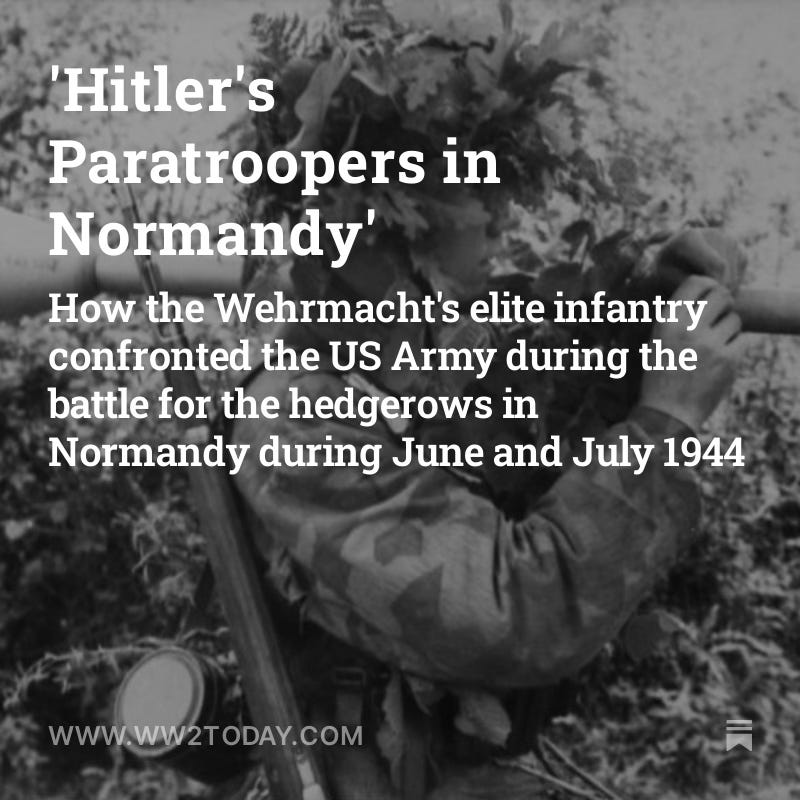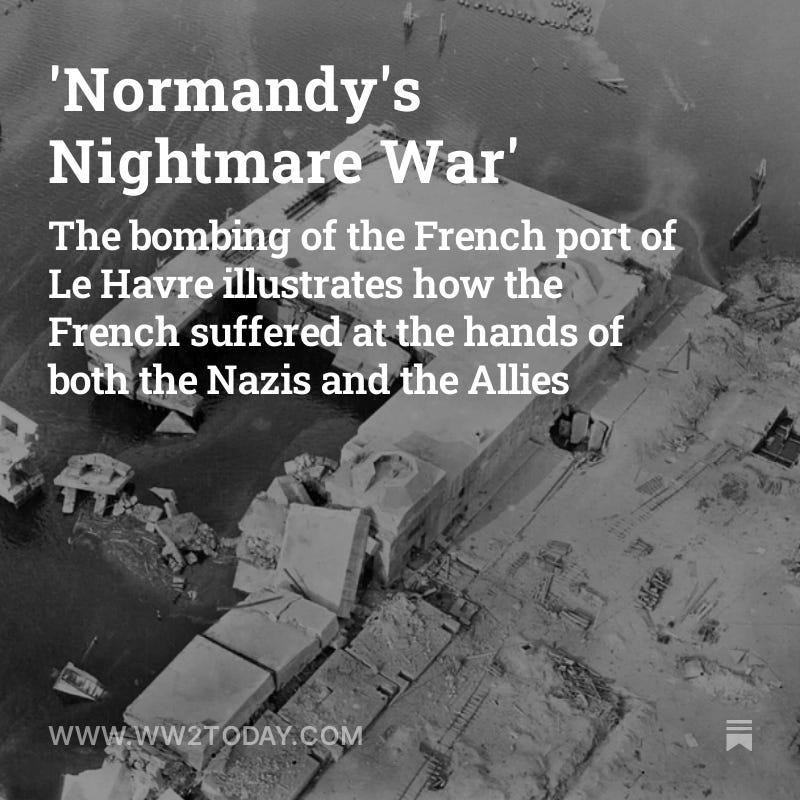Normandy in 1944
A collection of stories from a variety of perspectives on the hard-fought campaign over the summer of 1944 ...
The morning of 9 June, Major General J. Lawton Collins, the VII Corps Commander (of which the 82nd and 101st were a part for the battle), arrived in Sainte-Mère-Église, surveyed the battlefield and troops, and met Major General Matthew B. Ridgway, the 82nd Airborne Division Commander, approximately where the railroad tracks cross under the road to La Fière. Note that the field next to the location was the major medical dressing area and casualty collection point. In Collins’ words, he saw the troops were extremely tired, seriously weakened by losses, and, in his view, marginally effective as a major fighting unit. He went to Ridgway, an old friend, and said, “Matt, your troops are tired and beat up and fought themselves to a standstill. Why don’t I pass the 90th [Infantry Division] through and have them clear the causeway and move west?”
In the dawn stonk the Company Sergeant Major was killed when a shell exploded near his trench and detonated his Gammon Antitank bombs. These bloody awful things were standard issue for us all and we hated them. They consisted of a sort of grenade or bomb, which was sticky and had a handle, resembling a large toffee apple. It was protected by a thin metal cover that was discarded when the bomb was about to be used. The bombs were highly sensitive and exploded with little encouragement. Standing orders were that these should be kept in every trench. If tanks overran us, the required procedure was to reach up and stick a bomb on the thin underside of the tank as it passed overhead.
The weather in France was excellent, with a thin overcast at 4,000 feet, and when the brilliant edge of the sun peeped up, the countryside was rosy and objects on the ground cast long, clean shadows. And it was just a moment after sunrise when we hit the jackpot: a long column of thirty or forty trucks crawling around the right-angle turn of a gravel road, quite obviously headed for the safety of a large patch of forest a mile from their present position.
One of the SAS soldiers was Vic Long, a 20-year-old from Northern Ireland, who had volunteered for the regiment four months earlier. 'My drop into France was my first taste of action, and my first actual time was the Orleans to Pithiviers railway line,' he remembered. 'That went quite smoothly, although it was 25 miles away, and it was a five-night trip. The trouble at night was dogs, not Germans. You went through the village, and just as you got on the outskirts, you heard this yapping, and then windows opened. You remained still, the window closed, you'd go on another 100 yards, and then another dog starts yapping. But there weren't many Germans around at night.'
Good camouflage and well-concealed positions made the firing points, gun and mortar, and anti-tank positions almost impossible to see from the American side. Some dugouts were as deep as 12ft with underground passageways leading to concealed, firing positions within the hedgerows. The firing slits from these positions were covered by vines growing out of the hedgerows. Machine guns were located under hedgerows at junctions to cover all possible approaches. During the ten days preceding the battle, the Fallschirmjager managed to badly shoot up almost every American patrol sent out trying to find gaps in their positions.
The civilians in the pocket were more interested at that moment in bread - now available only on Tuesdays, Thursdays and Saturdays. A limited distribution of cooking oil was available, as were tins ofcondensed milk for those with the right ration cards, plus 150 grams of ersatz coffee. All over the city, people queuing outside the thirty-seven butchers and thirty charcutiers with whom they were registered could clearly hear the artillery fire from the perimeter, and took this as a favourable sign that the Allies’ final assault was beginning, with their liberation only hours away. What point was there, they asked, in the Germans continuing to hold out in Le Havre when British spearheads had already reached Antwerp in Belgium and the Americans were approaching Reims?



